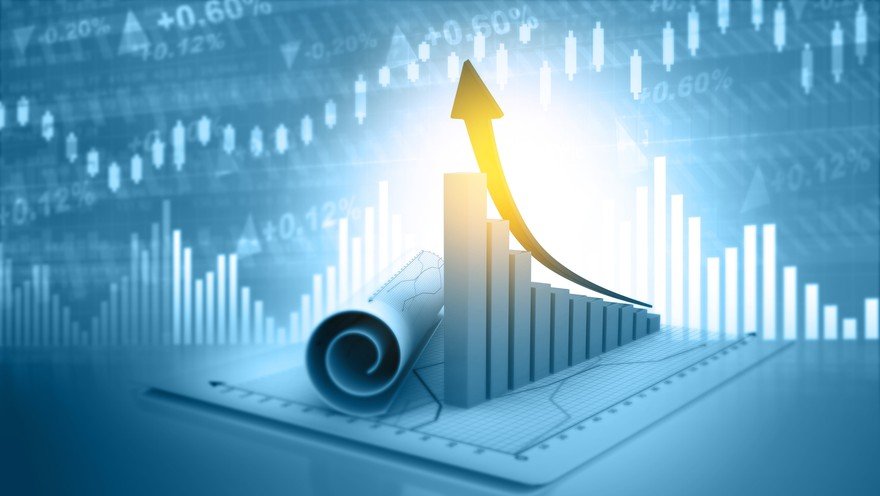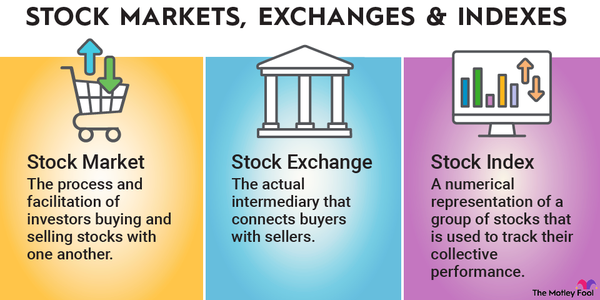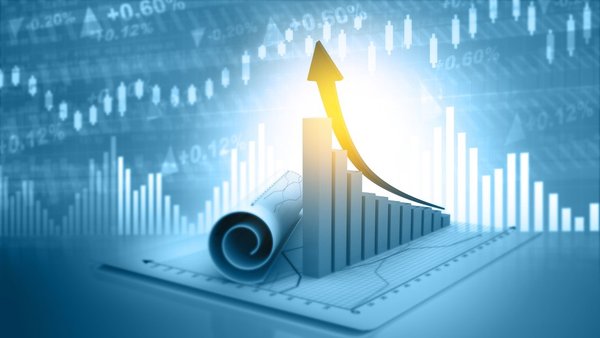There are literally thousands of publicly traded companies you can invest in, not to mention the many exchange-traded funds (ETFs) and mutual funds you can buy. So, it's not surprising that many investors don't know where to begin. And although the market is well above its recent bear market lows, plenty of stocks are trading for significantly less than they were a year or two ago.

But what are the best stocks to buy as we head into 2024? Although I can't consult a crystal ball that tells me what stocks will deliver the best returns, I've tried to do the next best thing. In this article, I'll discuss 10 stocks that I think could be great buys in 2024 and beyond for long-term investors looking to put their money to work.
Why these 10?
Why these 10?
Before we get to the stocks, let's acknowledge three caveats:
- Choosing the best stocks to buy today depends on your personal financial situation. To get a feel for where you stand, read our guide on how to invest in stocks. It walks you through topics such as establishing an emergency fund, allocating assets, and choosing the right stocks for you.
- I like these stocks as long-term investments, even in a bear market. I have absolutely no idea what they'll do over the next few weeks or months. In fact, if inflation stays elevated longer than expected, interest rates climb higher than investors believe they will, or the U.S. falls into a deep recession, it's entirely possible that most or all of these could decline in the near term.
- Although I ensured some variety, the list below isn't meant to be a fully diversified portfolio. Instead, they're my highest-conviction long-term stocks to invest in for 2024 and beyond. The best one-step way to diversify your holdings is to build the core of your portfolio around something like the Vanguard Total World Stock Index Fund ETF (VT -0.57%).
Now let's get to my list of the 10 best stocks to buy and hold for the long term -- from smallest market cap to largest -- followed by the summarized buy thesis for each.
Publicly Traded Company
The top 10 stocks
The top 10 stocks to buy in April 2024
- CrowdStrike (CRWD -0.12%), $68 billion
- PayPal (PYPL -0.13%), $66 billion
- MercadoLibre (MELI -1.27%), $84 billion
- Airbnb (ABNB 0.68%), $88 billion
- Shopify (SHOP 0.19%), $105 billion
- Intuitive Surgical (ISRG 0.32%), $128 billion
- Walt Disney (DIS 0.82%), $165 billion
- Berkshire Hathaway (BRK.A -1.05%)(BRK.B -0.83%), $797 billion
- Amazon (AMZN -0.16%), $1.60 trillion
- Alphabet (GOOGL -0.3%)(GOOG -0.21%), $1.79 trillion
Elevator pitches for each stock
Now that you've seen my top 10 best stocks to buy now, you may be wondering why I picked each company. Here's a quick rundown of why I'm such a fan of each as a long-term stock to invest in.
1–3
1. PayPal
PayPal is an absolute cash machine that has been beaten down by about 75% from its highs.
The main reason for its decline is that investors were disappointed when PayPal's growth abruptly slowed down in 2022, and management conceded that its previous user growth targets were unrealistic. Growth remained slow in 2023, and the company's future path to growth isn't crystal clear. Plus, with fears of a recession, we could certainly see lower consumer spending in the near term -- which would mean lower fee income for PayPal.
However, it's important for investors to realize that this is still a strong and highly profitable business. The company has about 430 million active users between PayPal and Venmo and processes roughly $1.3 trillion in annualized payment volume. The company produces about $5 billion in free cash flow annually and has been aggressively buying back its own stock with it, a sign management thinks it's cheap.
It's not hard to see why PayPal's management is choosing to use its capital this way. As 2024 started, the stock traded near its lowest price-to-sales ratio ever and just 12 times forward earnings.
2. Crowdstrike
The need for cybersecurity solutions isn't getting any smaller. And that's especially true when it comes to cloud-based security. CrowdStrike is leading the charge to keep data secure in the cloud.
CrowdStrike collects security data from each of its many users, analyzes it, and uses it to automate security throughout its entire network. This makes the platform highly effective at detecting the newest threats, and the more users adopt CrowdStrike's solutions (known as its Falcon platform), the more effective it becomes. The use of crowdsourced threat data and its leading market share give it a competitive advantage over peers.
With almost $3 billion in annual recurring revenue and a 75% gross margin, CrowdStrike's growth has been impressive, but this could be just the beginning. The company sees its current addressable market at $76 billion in potential revenue and expects that the opportunity could more than double to $158 billion by 2026.
3. MercadoLibre
One of my favorite long-term stock investments in the market, MercadoLibre, is often referred to as the Amazon of Latin America, and for good reason. The company operates an e-commerce marketplace with a dominant presence in some of the region's most populous nations, including Brazil and Argentina.
However, there's a lot more to MercadoLibre. It operates a fast-growing payments platform called Mercado Pago, a logistics service known as Mercado Envios, a business lending platform, and more.
The marketplace saw $11.4 billion in merchandise volume in the third quarter of 2023, 59% higher than the same quarter in 2022. Mercado Pago processes almost $190 billion in annualized volume, with three-fourths coming from outside the company's e-commerce platform.
E-commerce
Both main parts of the business are growing rapidly. And don't overlook Mercado Credito, the company's young but fast-growing (and highly profitable) lending business. Mercado Credito has $3.8 billion of outstanding loan balances and has grown rapidly so far.
The best part is that all these businesses are in the relatively early stages. MercadoLibre's merchandise volume is roughly 8% of Amazon's, and its Mercado Pago payment volume is about 15% of the amount that PayPal (PYPL -0.13%) processes. So there's a ton of runway ahead.
MercadoLibre isn't just the Amazon of Latin America -- it's the Amazon, PayPal, Block (Square), Shopify, and more all rolled into one. And it's in a much earlier stage of growth. As the e-commerce and fintech landscapes in Latin America evolve over the coming years, MercadoLibre could be a major long-term beneficiary.
4–6
4. Airbnb
There are few companies that have been as successful in disrupting an entire industry as Airbnb. The company started in 2007 as a few air mattresses on the floor of the co-founders' apartments (that's where the company gets its name) and has evolved to the point where it has changed the way millions of people look at travel accommodations.
Airbnb has more than 4 million hosts who list accommodations on its platform, and the numbers are rather jaw-dropping. In the most recent quarter alone, more than 113 million nights and experiences were booked on Airbnb's platform, with a total booking value of $18.3 billion, which represents 17% year-over-year growth.
Plus, not only is Airbnb massive and growing fast, but it is highly profitable. It has generated $4.2 billion in free cash flow (FCF) over the past 12 months and has a 44% FCF margin.
Looking forward, Airbnb has more than $11 billion in cash and short-term investments on its balance sheet and still has a massive growth opportunity. Its overall market opportunity is estimated in the trillions of dollars when we include short-term stays, long-term stays, and experiences. Plus, management clearly thinks the stock's valuation doesn't reflect the long-term opportunity since the company has been buying back shares rather aggressively.
5. Shopify
Shopify operates a platform designed to allow businesses of all sizes to sell their products online, with a particular focus on empowering smaller businesses and growing with them by establishing long-term relationships.
Shopify offers a subscription plan starting at $39 per month for businesses and many adjacent services that help businesses operate smoothly, such as payment processing solutions and logistics.
Shopify's "one-stop shop" approach to enabling e-commerce has turned it into a powerhouse. It now has more e-commerce sales flowing through its ecosystem than any other company besides Amazon. However, Shopify could be just getting started.
The platform has generated $6.7 billion in revenue over the past four quarters. However, this is just a fraction of its estimated $153 billion (and growing) market opportunity as more retailers shift their focus to online sales.
E-commerce is still in the relatively early stages, making up slightly more than 15% of retail sales in the United States. Shopify has the No. 2 share, giving it a powerful ecosystem with network effect advantages over competitors.
The stock's price is still well below the highs in the recent market downturn due to recession fears and signs of a slowdown in consumer spending, and Shopify looks like a great long-term opportunity.
6. Intuitive Surgical
Robot-assisted surgery beats shaky human hands. That general thesis hasn't changed much from when I first noticed Intuitive Surgical stock in 2005. The da Vinci surgical system is the clear market leader, and its "razors and blades" model helps Intuitive generate a recurring stream of revenue.
Intuitive Surgical is dominant in its space, with a global market share of about 80%. And it has lots of room to grow as the adoption of its surgical systems and the number of supported procedures increase over time. This is particularly true in many international markets, where the implementation of robot-assisted surgery could be a long-tailed growth catalyst for this excellent business for decades to come.
7 –10
7. Walt Disney
The House of Mouse is like the all-weather tires of a portfolio. The pandemic hurt its theme park and movie businesses but helped the Disney+ streaming service, which has grown into a powerhouse years earlier than Disney expected.
In fact, Disney+ now has more than 150 million subscribers just four years after launching, while the company's initial five-year goal called for 60 million to 90 million. To be sure, Disney is still trying to figure out the best ways to make Disney+ a profitable business, but it's clearly progressing in the right direction. The market is absorbing price increases with little impact on the subscriber count.
As we head into 2024, demand for Disney's theme parks, movies, and cruise line has been very strong despite costs rising in recent years, as well as recession fears. In fact, revenue in Disney's parks is far greater than in comparable pre-pandemic times due to initiatives that have driven higher per-guest spending. Plus, the company recently announced it will invest $60 billion over the next 10 years in its theme parks and cruise lines to make sure they stay full for the foreseeable future.
With Disney also laser-focused on the profitability of Disney+ and its other streaming platforms, Hulu and ESPN+, this could be a powerful combination of profitable all-weather revenue streams. In a nutshell, Disney might be the ultimate combination of an in-person experiential stock and a tech-focused growth business.
Disney's amazing stable of intellectual property (Marvel Cinematic Universe/Star Wars/ESPN/Pixar/Disney) and cash-machine theme park business gives it a margin of safety that makes it perhaps the safest stock on this list. And it still has tremendous profit growth potential as the newer areas of its business evolve.
8. Berkshire Hathaway
Although most of this list is made up of growth stocks, or at least stocks that have some exciting growth drivers, this is the relatively boring value pick of the bunch (but in the best possible way).
Berkshire Hathaway owns a collection of about 60 subsidiary businesses, including household names such as GEICO, Duracell, and Dairy Queen, just to name a few. Berkshire also owns a portfolio of common stocks worth about $360 billion that includes massive stakes in Apple (AAPL -1.92%), Bank of America (BAC -3.53%), Chevron (CVX -0.83%), American Express (AXP -0.03%), and Coca-Cola (KO -0.14%), as well as positions in dozens of other companies. Many were particularly savvy investments, such as the Bank of America stake, which resulted from a preferred stock deal made in the wake of the financial crisis.
Most of the larger positions were personally handpicked by legendary investor Warren Buffett, who still manages the bulk of Berkshire's investments at the age of 93. In fact, If Berkshire were a mutual fund, it would be the world's largest actively managed mutual fund.
The Buffett bears will say he has lost his fastball, but Berkshire continues to produce market-beating returns in most years despite its massive size. And while Berkshire certainly won't produce the roughly 4,370,000% return (not a typo) it has produced from the time Buffett took the helm through the end of 2023, there's no reason to believe it won't continue to outpace the S&P 500 for the foreseeable future.
Buffett won't be in charge forever. But Berkshire is his legacy, and he's been stress-proofing it for years to ensure it's in solid shape long after he's no longer running things. Showing his faith, he has been buying back shares regularly over the past few years, which he can only do if he thinks the company is trading for less than its intrinsic value. That's a good sign for patient long-term investors like us.
9. Amazon
Amazon doesn't really need much of an elevator pitch for most people. The company has a dominant lead in the U.S. e-commerce market. And its Amazon Web Services cloud platform is also a market leader, with a significant lead over the other two large players in the space, Microsoft (MSFT 0.23%) and Alphabet (GOOGL -0.3%)(GOOG -0.21%).
However, more growth potential exists than you might think. We're still a long way from maximizing e-commerce adoption; it still accounts for a little more than 15% of all U.S. retail sales. The cloud industry is relatively young and expected to roughly quadruple in size to a $2.3 trillion market by 2032. Amazon also has a ton of potential in other areas, such as healthcare, grocery stores, neighborhood markets, and more.
10. Alphabet
Alphabet isn't exactly a household name, but its main subsidiary -- Google -- certainly is. And there's a lot more to the business and its future potential than the massive internet search operation that has a dominant market share.
Google is divided into two main segments -- Google Services and Google Cloud. Google Services includes the massive search platform, YouTube, Google Play, Gmail, Android, Chrome, and Nest smart-home products. This part of the business makes most of its money from advertising, but there's also significant revenue from hardware (Nest) and in-app purchases (Google Play).
Google Cloud is the company's cloud services division and has the No. 3 market share, competing with larger players Amazon Web Services (AWS) and Microsoft's Azure. Google Cloud has been growing its market share in recent years, and the cloud infrastructure market itself is forecast to quadruple in size by 2030. So, while this makes up about 10% of the company's revenue today, it could be the biggest growth driver for years to come.
In addition, Alphabet has a segment called Other Bets, which owns several promising early-stage businesses. The Waymo self-driving vehicle technology company is perhaps the most notable, and while none of the Other Bets companies produce any significant revenue yet, there's lots of long-term potential.
How to use this list
How to use this stock list
If you're just starting out on your investing journey (or want a sanity check), please read through our guide on how to invest in stocks (mentioned above). It goes through all the basics, from how to get started to how to determine your personal investing strategy to how much of your money to invest in stocks.
Although I'm bullish on each of these stocks and think they are good stocks to buy right now, they might not all be the best choices for investors without established and diversified portfolios. Even the most stable companies on this list aren't immune to volatility in their stock prices, especially over short periods.
For this reason, if you're just getting started, you'll also want to see our list of the five top tips for investing in stocks for beginners. To be sure, I think the 10 stocks discussed here are some of the best long-term stock investments you can buy now. But it's wise to start with the stocks that speak to you and feel free to ignore the ones that don't.
Suzanne Frey, an executive at Alphabet, is a member of The Motley Fool’s board of directors. Bank of America is an advertising partner of The Ascent, a Motley Fool company. American Express is an advertising partner of The Ascent, a Motley Fool company. John Mackey, former CEO of Whole Foods Market, an Amazon subsidiary, is a member of The Motley Fool’s board of directors. Matthew Frankel, CFP® has positions in Amazon, American Express, Bank of America, Berkshire Hathaway, MercadoLibre, PayPal, Shopify, and Walt Disney and has the following options: short February 2024 $105 calls on Shopify. The Motley Fool has positions in and recommends Airbnb, Alphabet, Amazon, Apple, Bank of America, Berkshire Hathaway, Chevron, CrowdStrike, Intuitive Surgical, MercadoLibre, Microsoft, PayPal, Shopify, and Walt Disney. The Motley Fool recommends the following options: long January 2026 $395 calls on Microsoft, short January 2026 $405 calls on Microsoft, and short March 2024 $67.50 calls on PayPal. The Motley Fool has a disclosure policy.










